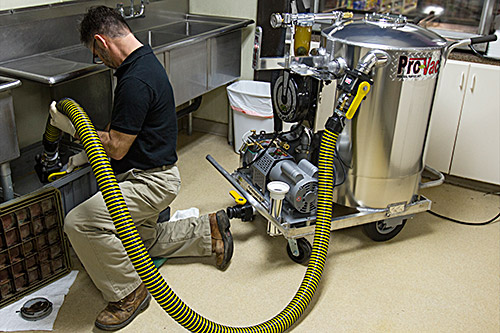Commercial grease trap maintenance is crucial for restaurants and other food service establishments to ensure proper functionality, prevent blockages, and comply with environmental regulations. Here are the key aspects covered in a comprehensive commercial grease trap maintenance program. Read on and if you are searching for commercial grease trap maintenance in Long Island or grease trap removal in Long Island, then you can refer to the concluding part of the article.
Regular Inspection
Regular inspections are fundamental to grease trap maintenance. Trained professionals inspect the entire grease trap system to identify any signs of damage, wear, or issues that may affect performance. These inspections help catch problems early, preventing costly repairs and downtime.
Grease Trap Pumping
Grease traps accumulate fats, oils, and grease (FOG) over time. Routine pumping is necessary to remove these accumulations and prevent blockages. The frequency of pumping depends on the size of the grease trap and the volume of wastewater generated. Typically, pumping is recommended every 1 to 3 months.
Scraping and Cleaning
During maintenance, the interior of the grease trap is thoroughly scraped and cleaned. This process removes residual grease and solid particles that may have settled at the bottom. Cleaning ensures optimal trap efficiency and prevents the formation of stubborn deposits.
Baffle Inspection and Repair
Grease traps are equipped with baffles to slow down the flow of wastewater, allowing grease to separate and float to the top. Baffle inspection is essential to ensure they are intact and functioning correctly. Damaged or missing baffles are repaired or replaced during maintenance.
Hydro Jetting
High-pressure water jetting, known as hydro jetting, is used to clean the interior walls and pipes connected to the grease trap. This process removes hardened grease and debris, maintaining proper flow and preventing the formation of blockages within the plumbing system.
Odor Control
Grease traps can emit unpleasant odors if not properly maintained. Odor control measures, such as the use of environmentally friendly deodorizing agents or bacterial additives, may be applied during maintenance to keep the trap smelling fresh.
Inlet and Outlet Inspection
The inlet and outlet pipes of the grease trap are inspected to ensure they are free from clogs or obstructions. Any issues with these pipes can affect the overall performance of the grease trap and the connected plumbing.
Compliance Documentation
Many municipalities have regulations in place regarding grease trap maintenance for commercial establishments. A professional maintenance service provides documentation to confirm compliance with local ordinances. This documentation is crucial for regulatory inspections and may help avoid fines.

Grease Trap Sizing Assessment
As the volume of wastewater and FOG may change over time, it’s essential to assess whether the existing grease trap size is still suitable. If the establishment’s operations have expanded or changed, a reassessment may be necessary to ensure the grease trap meets current needs.
Education and Training
Commercial grease trap maintenance services may offer education and training to kitchen staff. Proper practices for FOG disposal, including the use of sink strainers and the avoidance of pouring fats down drains, are essential in preventing issues with the grease trap.
Emergency Repairs
In the event of a malfunction or emergency, professional grease trap maintenance services are equipped to handle repairs promptly. This includes addressing issues such as leaks, structural damage, or system failures to minimize downtime and maintain kitchen operations.
Waste Disposal
Proper disposal of the removed grease and waste is a critical component of grease trap maintenance. Certified professionals ensure that waste is disposed of in accordance with local environmental regulations, preventing contamination and protecting water quality.
Monitoring and Reporting
Some grease trap maintenance services offer monitoring solutions, including the use of sensors to track grease levels and performance. Regular reports detailing the condition of the grease trap and any recommendations for improvements may be provided to the establishment.
Grease Interceptor Maintenance (for larger establishments)
Larger food service establishments may use grease interceptors, which are larger-scale grease traps. Maintenance for these systems includes similar procedures as regular grease traps but on a larger scale, with an emphasis on accommodating higher wastewater volumes.
Find the best commercial grease trap maintenance in Long Island
In summary, comprehensive commercial grease trap maintenance encompasses regular inspections, pumping, cleaning, baffle inspection and repair, hydro jetting, odor control, inlet and outlet inspection, compliance documentation, sizing assessment, education and training, emergency repairs, waste disposal, and monitoring and reporting.
Regular and professional maintenance ensures the proper functioning of the grease trap, prevents plumbing issues, and helps establishments adhere to environmental regulations. To know more or to find a service for grease trap pumping in Long Island or grease trap removal in Long Island, you can visit the website.